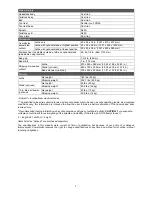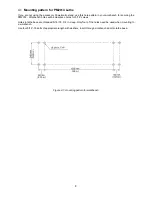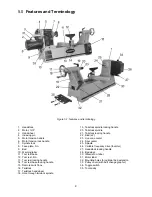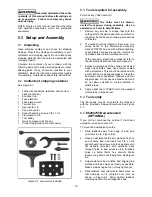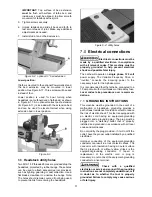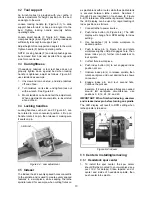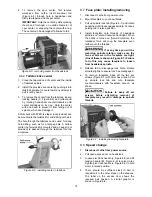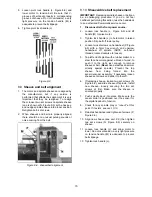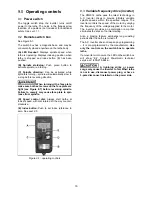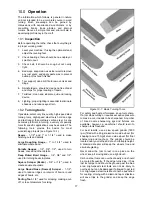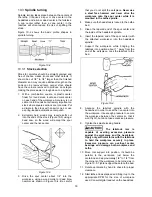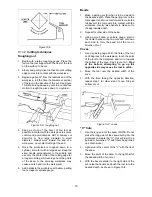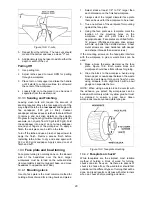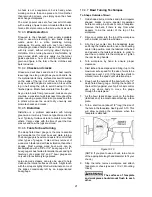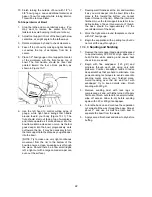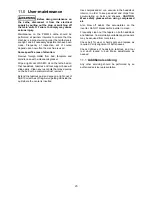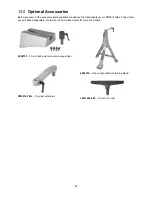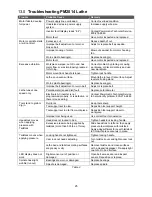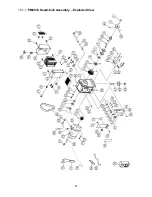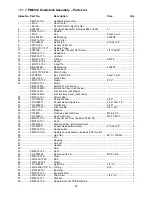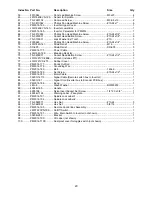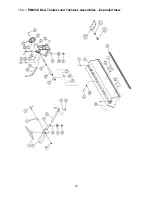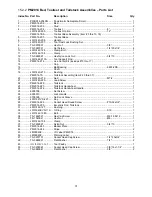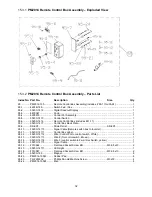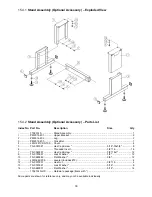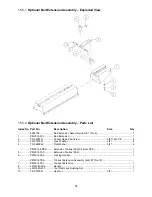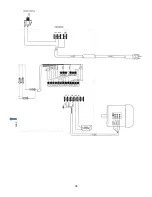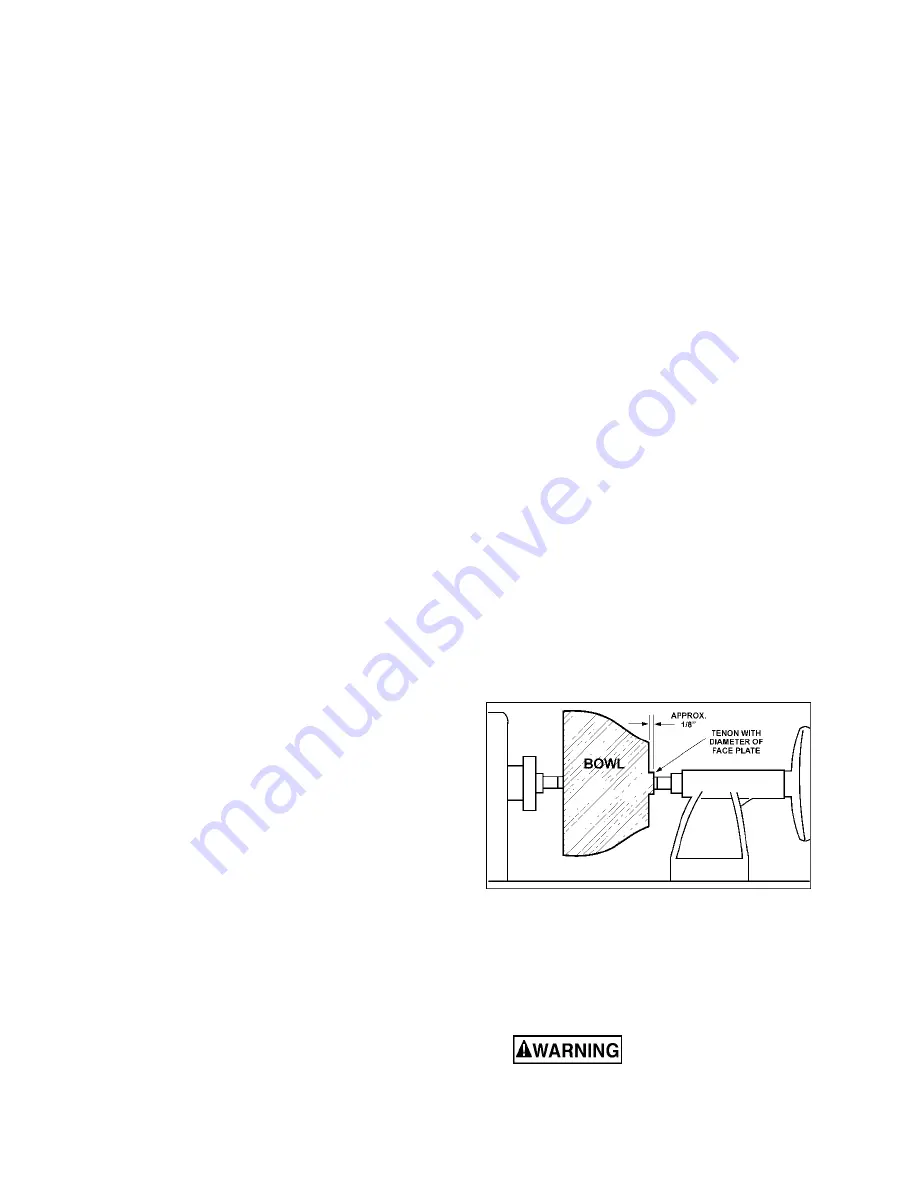
21
A chuck is not a requirement, but is handy when
working on more than one piece at a time. Rather
than removing screws, you simply open the chuck
and change workpieces.
The most popular ones are four jaw scroll chucks
with a variety of jaws to accommodate different size
tenons. Most also come with a screw chuck as well.
10.4.3
Wood selection
Firewood is the cheapest, most widely available
stock to use while learning to turn bowls. Simply
waste wood for a while practicing turning
techniques. Develop skill with each tool before
attempting to make a finished piece. It is best to start
with dry wood, without worrying about drying or
distortion. Once turning becomes comfortable, try
green wood which cuts very easily. As the turner
gains experience, he or she will find extraordinary
grain and figure in the form of burls, crotches and
bark inclusions.
10.4.4
Checks and cracks
Green wood will check and crack. For best results,
leave logs in as long a length as you can handle. As
the material starts to dry, surface cracks will develop
on the ends of the log. Cut off two to three inches
and you should find good, sound wood. Also cut the
log in half along the pith to avoid having it in the
finished piece. Most checks radiate from the pith.
As you turn bowls from green wood, make sure you
maintain a consistent wall thickness throughout the
piece. Leaving a piece thick in some areas and thin
in others will cause the wood to dry unevenly and
promote checks and cracks.
10.4.5
Distortion
Distortion is a problem associated with turning
green wood. It will vary from one type of wood to the
next. Typically, fruitwoods tend to distort more than
others. It also varies with the time of year the tree
was cut and how the logs are stored.
10.4.6
Tools for bowl turning
The deep fluted bowl gouge is the most essential
and versatile tool for most bowl and plate turning.
The bowl gouge is heavier and easier to control than
other types of gouges. It also allows removal of
wood much faster and with less vibration than other
gouges. Most average sized bowl work can be
accomplished with a 3/8" or 1/2" bowl gouge. A 1/4"
bowl gouge is best suited for smaller bowls and light
finishing cuts. Larger 3/4" and 1" bowl gouges are
only used for extremely large pieces.
Large domed scrapers can also be used to help
clean up the interior surfaces of bowls. A light touch
with the scraper slightly tilted will eliminate some of
the ridges occasionally left by an inexperienced
bowl gouge.
10.4.7
Bowl Turning Techniques
To Shape Outside of Bowl:
1. Odd shaped burls, crotches and other irregular
shaped blanks require special preparation
before mounting in a chuck or onto a faceplate.
Remove the bark, if there is any, from what
appears to be the center of the top of the
workpiece.
2. Drive spur center into the top of the workpiece
with a mallet or dead blow hammer.
3. Slip the spur center into the headstock taper
and bring the tailstock with a live or ball bearing
center into position. Lock the tailstock to the bed
and advance the tailstock spindle in order to
seat the cup center into the workpiece. Tighten
the ram locking handle.
4. Turn workpiece by hand to ensure proper
clearance.
5. Start lathe at lowest speed and bring it up to the
maximum safe speed for the size of work to be
turned (see
sect. 14.0
). If the machine starts to
vibrate, lower the speed until vibration stops.
6. Rough out the outside of the bowl with the 1/2"
deep fluted bowl gouge, holding the handle of
the tool firmly against your hip. For best control,
use your whole body to move the gouge
through the workpiece.
7. As the bowl takes shape, work on the bottom
(tailstock end) to accomodate attaching a face
plate.
8. Turn a short tenon (about 1/8" long) the size of
the hole in the faceplate. See Figure 10-10. This
will allow centering the workpiece when the
faceplate is attached.
Figure 10-10
(NOTE: If you plan to use a chuck, turn a tenon
of the appropriate length and diameter to fit your
chuck.)
9. Stop the lathe, remove workpiece and attach
face plate or chuck (see
sect. 10.4.1, Mounting
Stock
).
The surfaces of faceplate
and workpiece should mount flush to each
other.
Summary of Contents for PM2014
Page 27: ...27 15 1 1 PM2014 Headstock Assembly Exploded View ...
Page 30: ...30 15 2 1 PM2014 Bed Toolrest and Tailstock Assemblies Exploded View ...
Page 35: ...35 16 0 Electrical connections PM2014 Lathe cont next page ...
Page 36: ...36 cont ...
Page 38: ...38 This page intentionally left blank ...
Page 39: ...39 This page intentionally left blank ...
Page 40: ...40 427 New Sanford Road LaVergne Tennessee 37086 Phone 800 274 6848 www powermatic com ...

